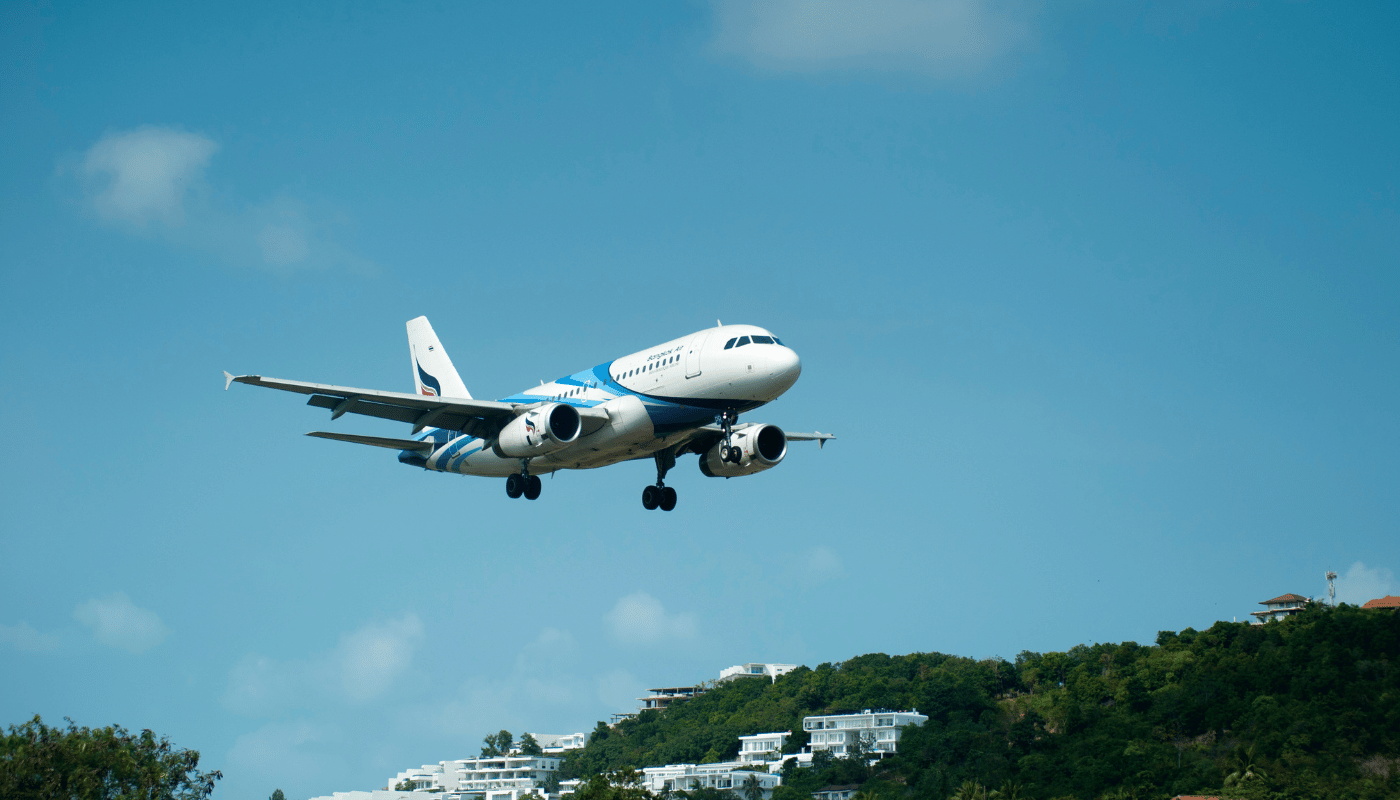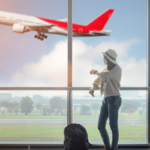Traveling to India has become a popular choice for tourists, business travelers, and those visiting family. However, many people notice that flights to India are often more expensive compared to other destinations. Understanding why flights to India cost so much can help travelers plan better and possibly find ways to save money. This article explores the main reasons behind the high cost of flights to India, offering clear and straightforward explanations.
High Demand and Limited Supply
One of the main reasons flights to India are expensive is the high demand for travel to the country. India attracts millions of visitors each year for its rich culture, historical sites, business opportunities, and family connections. When many people want to fly to the same destination, airlines can raise their prices because they know passengers are willing to pay more.
Additionally, the number of flights available to India may not always meet the high demand. This limited supply means that airlines can charge higher prices, especially during busy times. For example, during major festivals like Diwali or Holi, or in the winter months when the weather is pleasant, more people want to visit India, leading to higher airfare.
Operating Costs for Airlines
Airlines face various operating costs that influence ticket prices. Fuel is one of the largest expenses for any airline. When fuel prices rise, airlines often increase their ticket prices to cover these higher costs. Since many flights to India are long-haul, fuel consumption is significant, adding to the overall cost of the flight.
Another major expense is airport fees and taxes. Major Indian airports, such as Indira Gandhi International Airport in Delhi and Chhatrapati Shivaji Maharaj International Airport in Mumbai, charge airlines for landing, takeoff, and other services. These fees can be substantial and are passed on to passengers through higher ticket prices. Additionally, security and maintenance costs at airports also contribute to the overall expense.
Limited Competition on Certain Routes
Competition among airlines can help keep flight prices lower. However, on some routes to India, there are only a few airlines operating, which reduces competition. When fewer airlines are available, they have more control over pricing and can set higher fares. This situation is common on routes where demand does not justify multiple airlines or where regulations limit the number of carriers.
For example, if only two or three airlines fly directly from a particular city to India, those airlines can keep prices high because travelers have limited choices. Without enough competition to drive prices down, passengers end up paying more for their flights.
Seasonal Variations and Peak Travel Times
Flight prices to India vary depending on the time of year. During peak travel seasons, such as winter when the weather is favorable or during major festivals, airfare tends to be higher. Airlines increase prices when demand is high because they know passengers are willing to pay more to travel during these busy periods.
Conversely, traveling during the off-peak season, like the monsoon or summer months when fewer tourists visit, can result in lower airfare. By choosing to fly during these times, travelers can often find more affordable ticket options. Planning trips outside of peak seasons can lead to significant savings on flight costs.
High Taxes and Fees
Taxes and fees add to the cost of flights to India. These include airport taxes, security fees, and service charges imposed by both departure and arrival airports. Additionally, governments may impose taxes on international flights, further increasing the overall ticket price.
The amount of these taxes and fees can vary depending on the country you are flying from and the specific airport in India you are arriving at. For instance, flying into a major airport like Delhi or Mumbai might include higher fees compared to smaller airports. Travelers should consider these additional costs when budgeting for their trips, as they can significantly impact the total expense.
Impact of Exchange Rates
Exchange rates between your home currency and the Indian Rupee can influence the cost of flights to India. If your currency is weaker compared to the Rupee, flights become more expensive. On the other hand, a stronger home currency can make flights more affordable.
Currency fluctuations can affect not only flight prices but also other travel-related expenses such as accommodation, food, and transportation within India. Travelers who monitor exchange rates and book flights when their home currency is strong may find better deals and save money on their trips.
Long-Haul Flight Costs
Flights to India are often long-haul, meaning they cover great distances and require more fuel and resources. Long flights are more expensive to operate, and these higher costs are reflected in the ticket prices. Additionally, long-haul flights may include more stops or layovers, which can add to the overall cost.
Longer flights also mean higher maintenance costs for aircraft and greater expenses for the airline in terms of crew salaries and in-flight services. All these factors contribute to the higher price of tickets for flights to India.
Additional Services and Amenities
Airlines offer various services and amenities to enhance the passenger experience, but these can also increase the cost of flights. Services such as in-flight entertainment, Wi-Fi, meals, and comfortable seating add to the operational costs for airlines. To cover these expenses, airlines may charge higher ticket prices.
Moreover, premium services like extra legroom, priority boarding, and luxury cabins come at a higher price point. While these amenities improve the travel experience, they contribute to the overall cost of flying to India.
Comparison of Flight Costs from Major Cities to India
| Departure City | Average One-Way Ticket Price (USD) | Major Airlines Operating | Typical Travel Time |
| New York City (JFK) | $800 – $1,200 | Air India, United, Emirates | 14-18 hours |
| London (LHR) | $600 – $1,000 | British Airways, Air India, Virgin Atlantic | 8-10 hours |
| Sydney (SYD) | $1,200 – $1,800 | Qantas, Air India, Singapore Airlines | 14-20 hours |
| Dubai (DXB) | $400 – $700 | Emirates, Air India, IndiGo | 3-4 hours |
| Singapore (SIN) | $500 – $900 | Singapore Airlines, Air India, IndiGo | 5-7 hours |
Technological and Infrastructure Constraints
India’s airport infrastructure is continually improving, but it may not be as developed as in some other countries. Limited runway capacity, outdated facilities, and congestion at major airports can increase operational costs for airlines. These higher costs are then passed on to passengers through more expensive tickets.
Additionally, some airports may lack advanced technology, leading to inefficiencies and delays. These issues can reduce the number of flights airlines can operate, further limiting supply and driving up prices. Investing in better infrastructure can help reduce these costs in the long run, potentially lowering airfare.
Regulatory and Bureaucratic Challenges
Operating flights to India involves navigating a complex regulatory environment. Airlines must comply with various safety standards, security measures, and operational guidelines set by both their home countries and India. These regulations can increase the cost of operating flights, which in turn affects ticket prices.
Bureaucratic hurdles, such as obtaining necessary permits and adhering to visa requirements for crew members, add to the operational costs. Additionally, bilateral agreements between countries regarding air rights and flight capacities can influence the availability and cost of flights to India.
Airline Pricing Strategies
Airlines use different pricing strategies to maximize their revenue, which can impact the cost of flights to India. One common strategy is dynamic pricing, where ticket prices change based on demand, time of booking, and other factors. During periods of high demand, prices increase, while they may decrease during times of lower demand.
Another strategy is tiered pricing, offering different classes of service at varying price points. Economy class tickets are usually cheaper, whereas business and first-class seats come at a premium. Additionally, airlines may charge extra for ancillary services like baggage, seat selection, and in-flight meals, further increasing the total cost of the flight.
Economic Factors and Global Events
Global economic conditions play a significant role in flight prices to India. Economic growth generally leads to increased travel demand, which can drive up prices. Conversely, during economic downturns, demand may decrease, potentially lowering airfare.
Global events such as pandemics, political instability, or natural disasters can also affect flight costs. For example, the COVID-19 pandemic led to reduced flight schedules and decreased competition, resulting in higher prices for available flights. Similarly, political tensions can restrict flight routes or reduce the number of available flights, making travel to India more expensive.
Environmental Considerations
The aviation industry is increasingly focused on reducing its environmental impact. Airlines are investing in more fuel-efficient aircraft and implementing sustainable practices, but these changes come with costs. The expense of adopting greener technologies and offsetting carbon emissions can lead to higher ticket prices.
Additionally, some governments impose taxes or fees related to environmental policies, such as carbon taxes, which are added to the cost of flights. These measures aim to encourage airlines to reduce their carbon footprint but can result in higher prices for passengers.
Technological Advancements and Their Impact
Advancements in aviation technology can influence flight prices to India in both positive and negative ways. Newer, more fuel-efficient aircraft can help reduce operating costs, potentially leading to lower ticket prices. However, the initial investment required to purchase and maintain advanced aircraft is significant, and airlines may pass these costs onto passengers.
In-flight technology, such as entertainment systems and Wi-Fi services, enhances the passenger experience but also adds to the operational expenses. While these amenities improve comfort and convenience, they contribute to the overall cost of flying.
Government Policies and Taxes
Government policies significantly impact the cost of flights to India. Policies related to aviation taxes, import duties on aircraft, and regulations governing airline operations can all influence ticket prices. High import duties on foreign aircraft make it more expensive for airlines to operate flights to India, and these costs are often passed on to consumers.
Additionally, government subsidies or support for certain airlines can affect the competitive landscape. If domestic airlines receive subsidies, they may offer lower fares, which can pressure international carriers to adjust their prices accordingly. Policies that promote competition and reduce regulatory hurdles can help lower flight costs over time.
Factors Contributing to High Flight Costs to India
- High Demand and Limited Supply
- Operating Costs for Airlines
- Limited Competition on Certain Routes
- Seasonal Variations and Peak Travel Times
- High Taxes and Fees
- Impact of Exchange Rates
- Long-Haul Flight Costs
- Additional Services and Amenities
Strategies to Reduce Flight Costs to India
- Book in Advance: Purchasing tickets well ahead of your travel dates can often result in lower prices.
- Travel During Off-Peak Seasons: Flying during times when fewer people travel can help you find cheaper flights.
- Be Flexible with Travel Dates and Airports: Adjusting your travel schedule or choosing different airports can lead to savings.
- Use Flight Comparison Websites: Comparing prices across multiple platforms can help you find the best deals.
- Consider Layovers and Connecting Flights: Flights with stops are usually cheaper than direct flights.
- Join Frequent Flyer Programs: Accumulating miles can provide discounts or free flights.
- Monitor Exchange Rates: Booking when your currency is strong can make flights more affordable.
- Look for Airline Promotions and Deals: Keeping an eye out for sales and special offers can help reduce costs.
Conclusion
Flights to India are often expensive due to a combination of high demand, significant operating costs, limited competition, seasonal travel peaks, and various taxes and fees. Additionally, factors like exchange rates, long-haul flight costs, and the provision of additional services and amenities contribute to the overall expense. Understanding these reasons can help travelers make informed decisions and explore strategies to reduce their travel costs. By booking in advance, traveling during off-peak seasons, and being flexible with travel plans, passengers can find more affordable flight options and enjoy their journey to India without breaking the bank.







